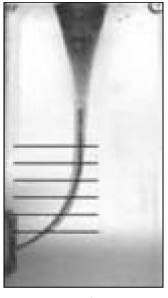References
1. Schilder H. Cleaning and shaping the root canal. Dent Clin North Am 1974. 18(2)269–296.
2. Weine F, Kelly R, Lio P. The effect of preparation procedures on the original canal shape and on apical foramen shape. J Endod 1975. 1255–262.
3. Walia H, Brantley WA, Gerstein H. An initial investigation of the bending and torsional properties of Nitinol root canal files. J Endod 1988. 14346–351.
4. Esposito PT, Cunningham CJ. A comparison of canal preparation with Nickel-Titanium and Stainless steel instruments. J Endod 1995. 21173–176.
5. Glossen CR, Haller RH, Dove SB, del Rio CE. A comparison of root canal preparations using Ni-Ti hand, Ni-Ti engine-driven, and K-Flex endodontic instruments. J Endod 1995. 21146–151.
6. Ruddle CJ. The ProTaper endodontic system: geometries, features, and guidelines for use. Dent Today 2001. 2060–67.
7. Walsch H. The hybrid concept of nickel-titanium rotary instrumentation. Dent Clin North Am 2004. 48183–202.
8. Clauder T, Baumann MA. ProTaper NT system. Dent Clin North Am 2004. 4887–111.
9. Schneider SW. A comparison of canal preparations in straight and curved root canals. Oral Surg Oral Med Oral Pathol 1971. 32271–275.
10. Kuhn WG, Carnes DL Jr, Clement DJ, Walker WA III. Effect of tip design of nickel-titanium and stainless steel files on root canal preparation. J Endod 1997. 23735–738.
11. Calhoun G, Montgomery S. The effects of four instrumentation techniques on root canal shape. J Endod 1988. 14273–277.
12. Kosa DA, Marshall G, Baumgartner JC. An analysis of canal centering using mechanical instrumentation techniques. J Endod 1999. 25441–445.
13. Buchanan LS. The standardized-taper root canal preparation-Part 1. Concepts for variably tapered shaping instruments. Int Endod J 2000. 33516–529.
14. Coleman CL, Svec TA. Analysis of Ni-Ti versus stainless steel instrumentation in resin simulated canals. J Endod 1997. 23232–235.
15. Iqbal MK, Firic S, Tulcan J, Karabucak B, Kim S. Comparison of apical transportation between ProFile and ProTaper NiTi rotary instruments. Int Endod J 2004. 37359–364.
16. Ankrum MT, Hartwell GR, Truitt JE. K3 Endo, ProTaper, and ProFile systems: breakage and distortion in severely curved roots of molars. J Endod 2004. 30234–237.
17. Schafer E, Schulz-Bongert U, Tulus G. Comparison of hand stainless steel and nickel titanium rotary instrumentation: a clinical study. J Endod 2004. 30432–435.
18. Calberson FL, Deroose CA, Hommez GM, De Moor RJ. Shaping ability of ProTaper nickel-titanium files in simulated resin root canals. Int Endod J 2004. 37613–623.
19. Bergmans L, Van Cleynenbreugel J, Beullens M, Van Meerbeek B, Lambrechts P. Progressive versus constant tapered shaft design using NiTi rotary instruments. Int Endod J 2003. 36288–295.
20. Peters OA, Schnenberger K, Barbakow F. ProTaper rotary root canal preparation: effects of canal anatomy on final shape analysed by micro CT. Int Endod J 2003. 3686–92.
21. Schäfer E, Vlassis M. Comparative investigation of two rotary nickel-titanium instruments: ProTaper versus RaCe. Part 1. Shaping ability in simulated curved canals. Int Endod J 2004. 37229–238.
22. Bergmans L, Van Cleynenbreugel J, Wevers M, Lambrechts P. Mechanical root canal preparation with NiTi rotary instruments: rationale, performance and safety. Status report for the American Journal of Dentistry. Am J Dent 2001. 14324–333.
23. Yun HH, Kim SK. A comparison of the shaping abilities of 4 nickel-titanium rotary instruments in simulated root canals. Oral Surg Oral Med Oral Pathol Oral Radiol Endod 2003. 95228–233.
24. Lee CH, Cho KM, Hong CU. Effect of various canal preparation techniques using rotary nickel-titanium files on the maintenance of canal curvature. J Korean Acad Conserv Dent 2003. 2841–49.
25. Berutti E, Chiandussi G, Gaviglio I, Ibba A. Comparative analysis of torsional and bending stresses in two mathematical models of nickel-titanium rotary instruments: ProTaper versus ProFile. J Endod 2003. 2915–19.







